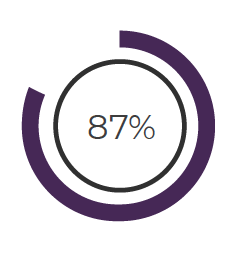Strong and happy communities
We want to live in communities that are friendly, cooperative and inclusive.
Central Bedfordshire will be a place where people look after their well-being and look out for others.
Opportunities
Central Bedfordshire’s market towns and villages lend themselves to close-knit communities where neighbours know one another; pragmatically, this existing cohesion can make community engagement easier to organise.
The development of new housing within Central Bedfordshire provide opportunities to design community spaces into new neighbourhoods that encourage integration from the outset and embed stewardship and long term management from the outset.
Social capital could be built through exploring more opportunities for informal volunteering, partnerships with schools and opportunities for link-minded communities to come together. Schools, libraries and music centres continue to be important flexible community spaces across Central Bedfordshire, offering spaces to gather.
Challenges
Population densities are particularly low in parts of Central Bedfordshire. Residents outside of larger settlements may be more isolated, and rely more on private car ownership to engage in community activities.
Spaces for community use need to be carefully considered, ensuring that they are flexible to different users needs and shared between groups, thus reducing the times that community buildings stand vacant.
The growth in digital and online platforms has the potential to result in increased social isolation and less physical interaction.
Trends
Resident satisfaction
Central Bedfordshire has a higher rate of resident satisfaction than the national average, with 87% of residents in Central Bedfordshire reporting being at least fairly satisfied with their local area in 2018.
Civic engagement
In terms of civic engagement, the amount of people in the UK engaging in unpaid volunteering is on the increase; from 17% of the population in 2010 to 2011, to 19% between 2014 to 2015.
Family and friends
85.6% of people in the region reported that they have a person they could go to should they have a problem, which was higher than the national average - suggesting the important influence of friends and family.
What we heard
“There will be an ‘open door’ policy for community engagement - everyone can get involved.”
“A friendly welcoming place with lots of opportunities.”
“We will eradicate racism and celebrate diversity”







